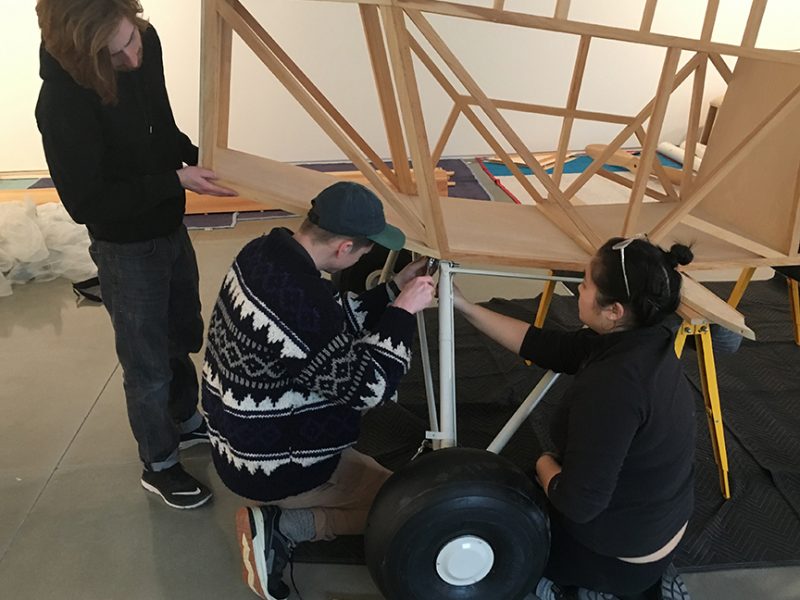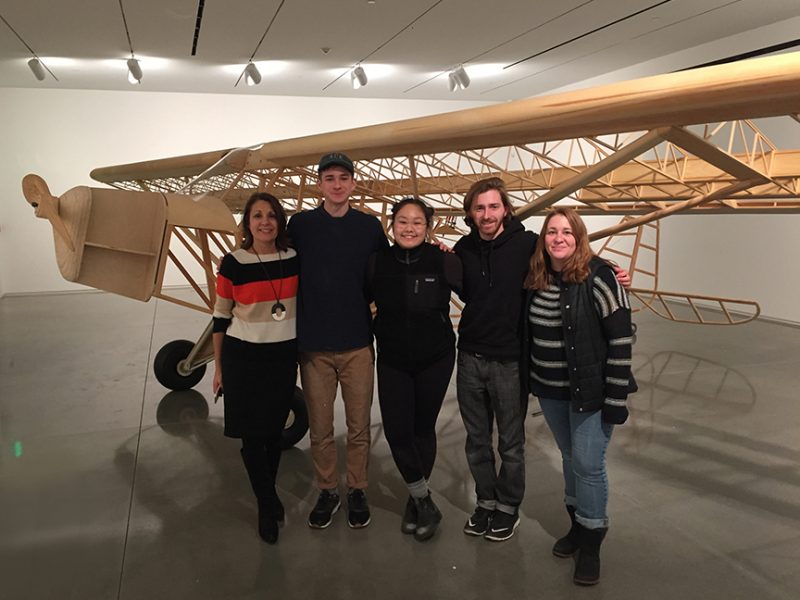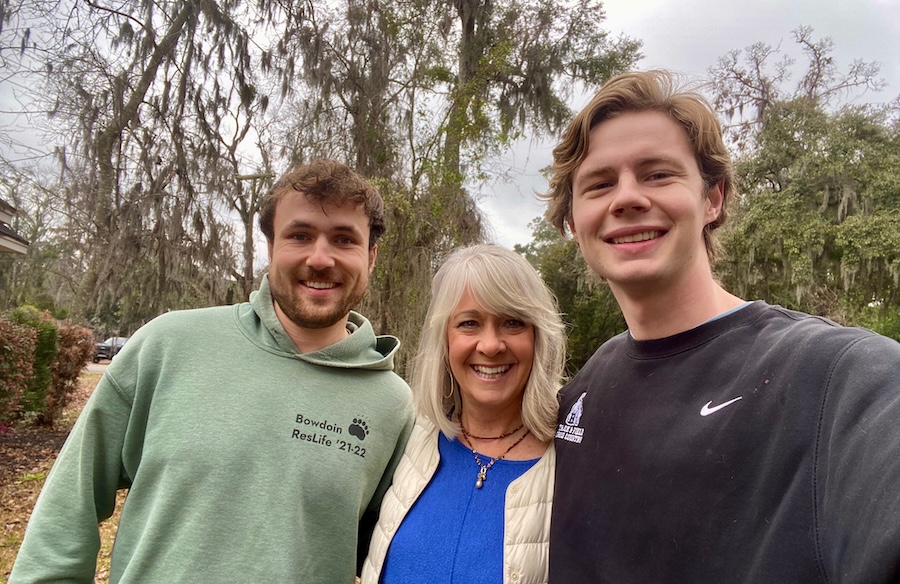Professor Mark Wethli's Sculpture 'Piper Cub' in Rockland Gallery
By Rebecca Goldfine


A current show at the Center for Maine Contemporary Art in Rockland, Maine, features professor Mark Wethli’s Piper Cub, an abstract framework of an airplane. The show runs concurrently with a painting exhibition by Sam Cady and a print show by David Driskell H’89.
The show’s opening is this Saturday, Feb. 18, from 4 p.m. to 7 p.m. The exhibition is open until May 14.
The sculpture by Wethli, who is Bowdoin’s A. LeRoy Greason Professor of Art, is based on the Piper J-3 Cub, an airplane built by Piper Aircraft in their Lock Haven, Penn. factory, between 1937 and 1947. “Its easy handling, simplicity, and affordability made it very popular for both pilot training and general aviation,” Wethli explains. “Of the 20,000 that were manufactured, thousands of Piper Cubs are still in service today, beloved by pilots and aviation enthusiasts alike for its classic design and signature yellow color.”
When Wethli was a boy, he watched his father Ralph — an aircraft mechanic — restore a derelict Piper Cub. He says his own version of the plane is “in large part a memoir of that achievement” and a tribute to his father, who taught him pride in craftsmanship. Ralph Wethli, at age 82, helped his son craft Piper Cub, 50 years after he had restored his own.
According to an artist’s statement about the piece, “The most noticeable thing about Wethli’s Piper Cub is that it’s incomplete; the abstract framework of an airplane rather than one that’s ready to fly. Piper Cub’s identity is further complicated, like Magritte’s famous pipe, by its uncertainty. Is it an actual plane, a sculpture of a plane, a full-scale model of a plane, or in some sense (in its idealized, Platonic forms) the prototype of a plane?
Although it’s not an actual aircraft (one that can be flown) it’s built from the original plans, identical to a real Piper Cub in every detail and dimension including the use of actual Piper Cub parts for the windshield, landing gear, and tires.
Significantly, Wethli has done nothing to artistically modify or interpret the plane, other than painstakingly recreating and presenting it (or, one might say, re-presenting it), suggesting that the ‘art’ of the piece resides in its conceptual nature (posing questions such as the ones above) rather than its formal one.
At the same time, by presenting Piper Cub in an art gallery, Wethli asks a question about the aesthetic nature of mechanical objects and our categorical approach to beauty. By hand-crafting the plane (with help from a team of friends and fellow artists in the final stages), Wethli seems to be encouraging us to look for beauty in unexpected places, not least of all in the contemplation of uncertainty, the joys of memory, and the beauty of sheer abstract form.”



